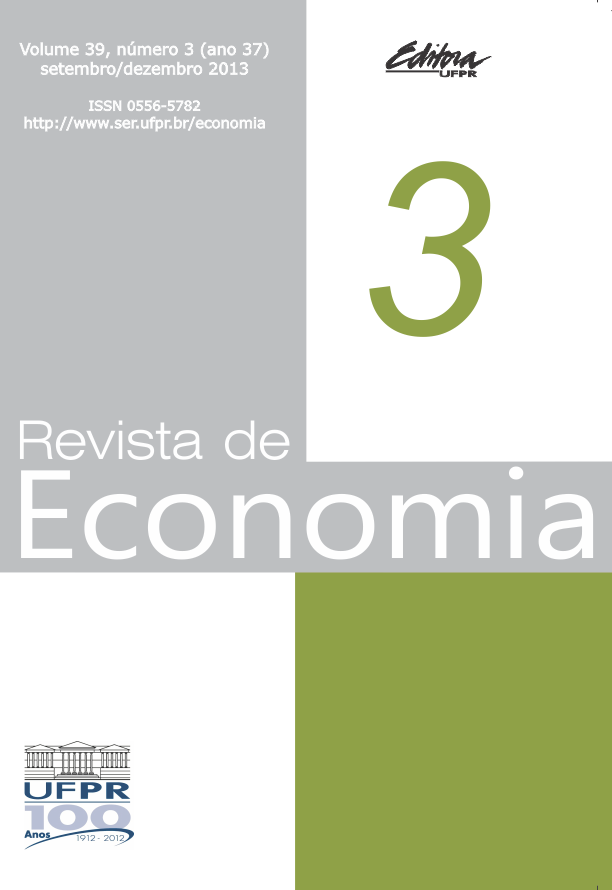INVESTIMENTO ESTRANGEIRO EM RENDA VARIÁVEL E TAXA DE CÂMBIO: RELAÇÕES NO PERÍODO 1999-2012 PARA A ECONOMIA BRASILEIRA
DOI:
https://doi.org/10.5380/re.v39i3.33020Keywords:
Investimento estrangeiro em carteira, variação cambial, Ibovespa, Brasil, vetores auto-regressivosAbstract
Os fluxos de capitais externos para investimento em carteira no Brasil tem se elevado nos últimos anos. Na década de 1990 o investimento estrangeiro foi predominantemente para renda fixa, e seu influxo exerceu influências sobre o câmbio. Na década seguinte este foi superado pelo investimento para renda variável. O objetivo deste trabalho é verificar se existe uma relação entre investimento estrangeiro em renda variável e taxa de câmbio, compreendendo as influências que exercem simultaneamente com Ibovespa e diferencial da taxa de juros, no período iniciado com a liberação do câmbio para flutuante em 1999, até 2012. Os resultados para o vetor auto regressivo e o teste de causalidade de Granger apontam para uma relação de causalidade da bolsa sobre o câmbio nos períodos de queda do Ibovespa, mas estes coeficientes ainda são inferiores aos do diferencial de taxa de juros.
Downloads
How to Cite
Issue
Section
License
By submitting a manuscript to this journal, authors agree with the following terms:
1. Authors retain copyright and grant the journal the right of first publication, with the work simultaneously licensed under the Creative Commons Attribution CC-BY License, which allows for the sharing of the paper while acknowledging authorship and initial publication in this journal.
2. Authors are granted the right to enter into additional and separate contracts aiming at the non-exclusive distribution of the version of the manuscript published in this journal (e.g., reproduction either in institutional repositories or as book chapters), with the acknowledgment of authorship and initial publication in this journal.





